Bechtler Museum of Modern Art
Introduction
Text-to-speech Audio
Images
Bechtler Museum of Modern Art Exterior
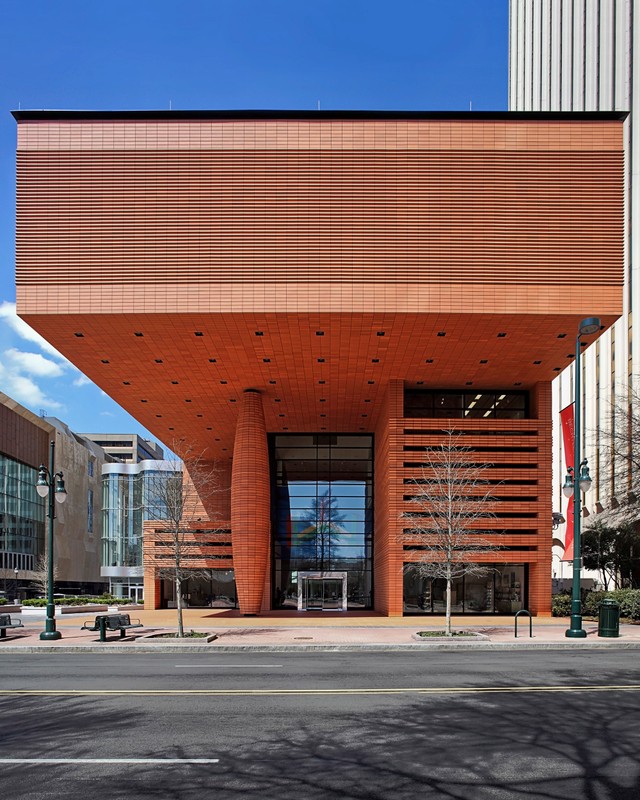
Bechtler Museum of Modern Art Exterior
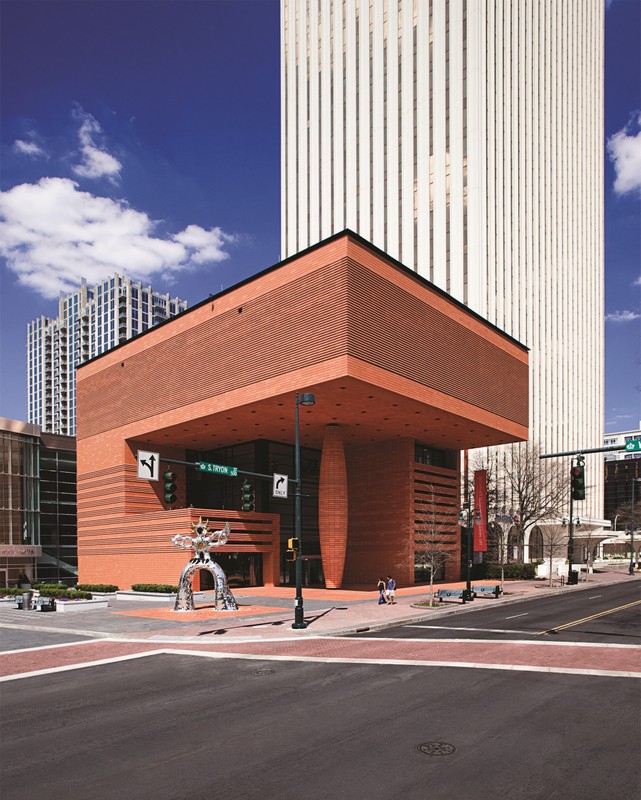
Bechtler Museum of Modern Art Exterior
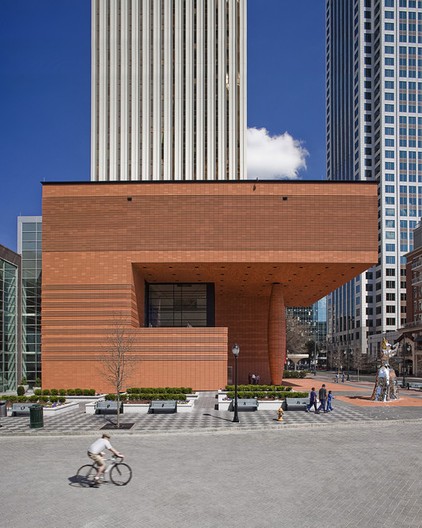
Bechtler Museum of Modern Art Interior
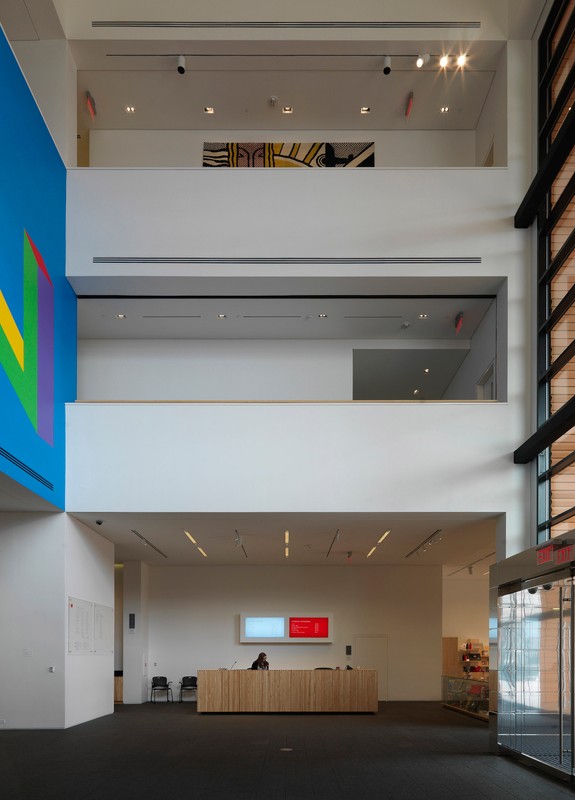
Bechtler Museum of Modern Art Interior
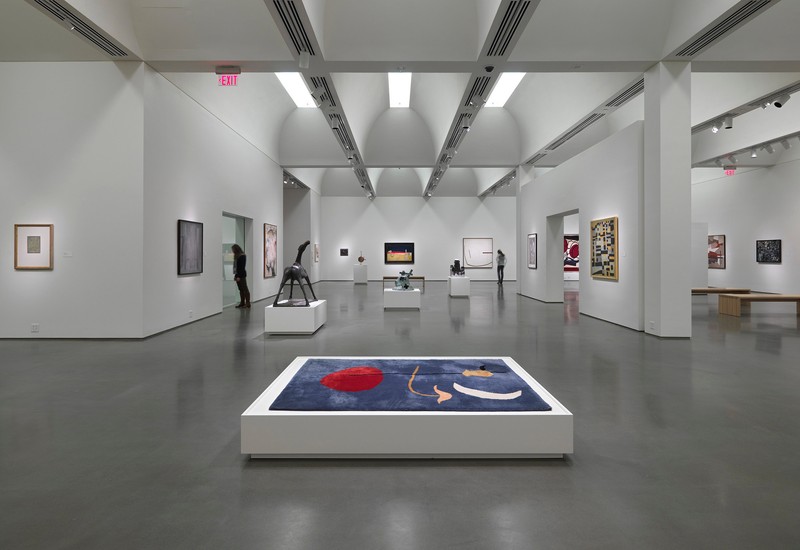
Bechtler Museum of Modern Art External Pillar
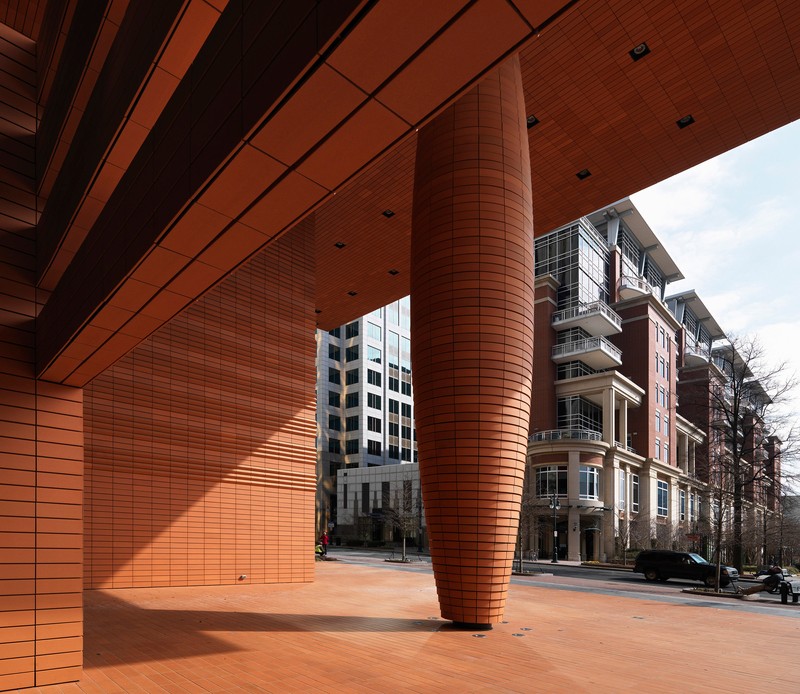
Backstory and Context
Text-to-speech Audio
The Bechtler Museum of Modern Art opened in 2010, and quickly became a fixture in the Charlotte museum scene. The building which houses the museum itself is significant, as it was designed by Swiss architect Mario Botta, whose other major contributions to the United States art scene includes designing the San Francisco Museum of Modern Art.
The building itself is an artistic and purposeful contribution. The museum is known for it’s soaring glass atrium which stretches across the museum, infusing natural light throughout the four floors. Other features include a terra cotta exterior, which encloses the building, and vaulted skylight system. The interior design of the building was precisely selected to infuse a natural and organic sense of elegance. Steel, glass, terra cotta, Black granite, polished concrete and wood composed the primary palette of construction materials. Botta himself designed this array, as well as many of the internal fixtures for the space, including the reception desk, the gallery benches, the cafe bar, and globe hanging lights.
The museum is named for the Bechtler family, including Andreas Bechtler, a native Swiss but North Carolina resident who collected nearly 1,500 pieces of artwork completed by major 20th-century modernism figures. The Bechtler’s amassed this collection through a combination of inheritance and personal gathering, passed down through parents, siblings, and extended family.
Exhibited in the collection are works from famous 20th-century artists, with an emphasis on the School of Paris post World War II. Artists displayed include Andy Warhol, Barbara Hepworth, Alberto Giacometti, Max Ernst, Jean Tinguely, Joan Miro, and Pablo Picasso.
One of the more well-known pieces is the 17.5-foot sculpture, The Firebird. Designed by French-American artist Niki de Saint Phalle, the creature was created from 7,500 mirror mosaics over polyester on steel armature. In 2006 Bechtler purchased the piece and in 2009 it was installed in the museum plaza.
The significance of The Bechtler Museum in telling the story of Romare Bearden is not that his works are part of the Bechter’s collection. Because The Bechtler features European artists, Bearden is not a fit for their specialty, rather, the connection is something else. Romare Bearden grew up in Harlem and was heavily influenced by the culture-soaked setting of his youth, including the jazz music. The Becthler is known for its jazz music series, something that would be familiar for Bearden. So much so that jazz music is a prominent theme in many of Bearden’s work.
Bearden’s homelife in Harlem was quite exceptional. Bearden’s father was a sanitation inspector for the New York Health Department and an accomplished piano player. Love of music and art informed Bearden’s childhood and teenage years.
Bessye Bearden, the artist’s mother, was a well-known and highly-respected social activist and progressive. As the New York correspondent for the Chicago Defendant, one of the most influential African American publications in the country, Bessye Bearden had excellent access to many of the most influential African American figures of her time.
Through his parents, Bearden received exposure to the vibrant culture and social happenings occurring in Harlem. The artist’s world included Langston Hughes, Duke Ellington, Fats Waller, W.E.B. Du Bois and Mary McLeod Bethune
Sources
"History." Bechtler Museum of Modern Art. Accessed July 27, 2015. http://www.bechtler.org/About/History.
